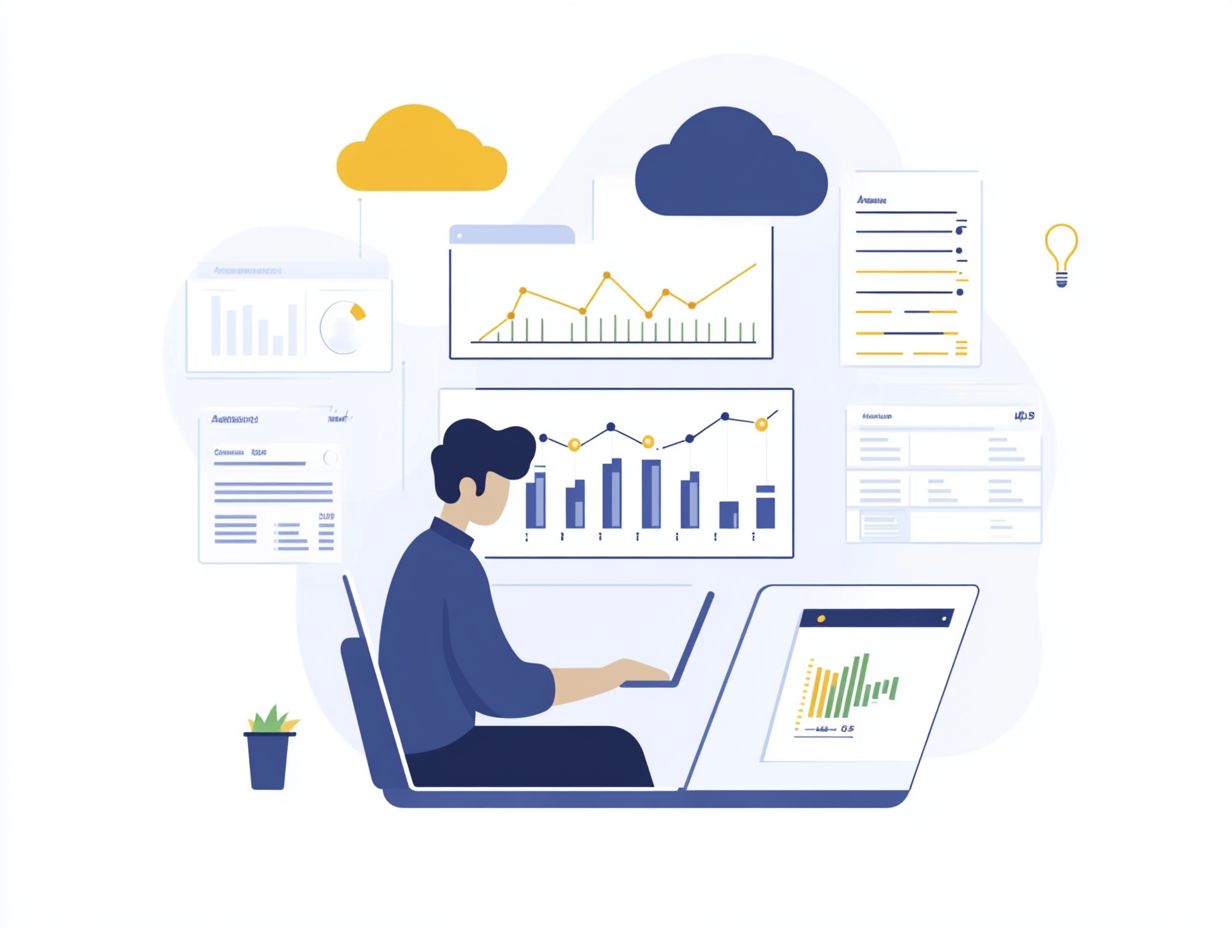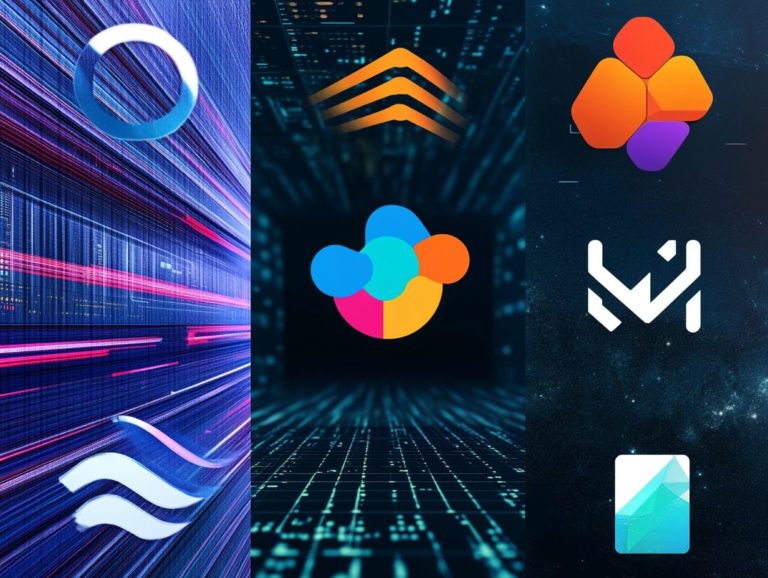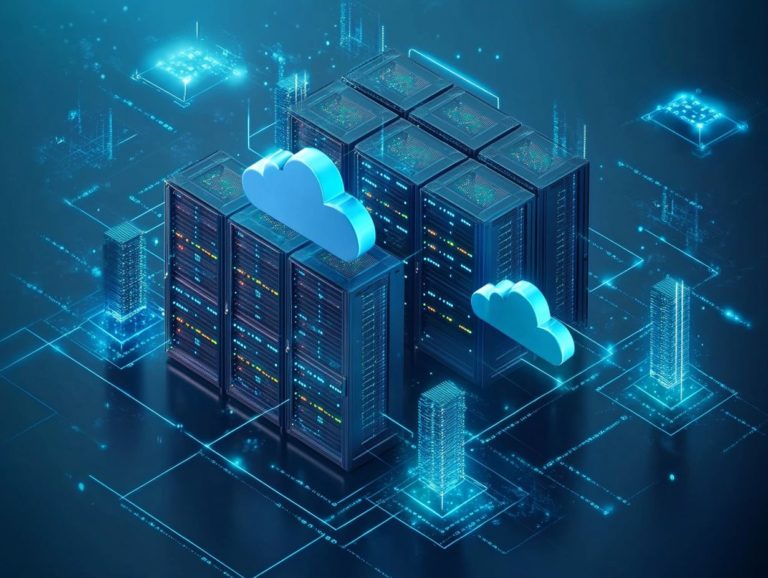How to Optimize IaaS for Cost Efficiency
In today’s fast-paced digital landscape, Infrastructure as a Service (IaaS) has become an essential element for businesses like yours that are seeking flexibility and scalability in operations. Join us on this exciting journey to discover smarter, more cost-effective IaaS solutions tailored to your needs.
While IaaS offers numerous benefits, it also presents challenges, particularly when it comes to managing costs. This discussion delves into the intricacies of cost efficiency in IaaS, emphasizing its significance, the factors influencing it, and practical strategies for optimization.
You ll find insights on popular tools for cost management, along with real-life case studies that showcase successful cost reduction efforts. We will also explore future trends that could revolutionize your business.
Contents
- Key Takeaways:
- Cost Efficiency in IaaS
- Factors Affecting Cost Efficiency
- Optimizing IaaS for Cost Efficiency
- Best Practices and Strategies
- Tools for Managing and Monitoring Costs
- Popular Cost Management Tools
- Case Studies: Successful IaaS Cost Optimization
- Future Trends in IaaS Cost Efficiency
- Frequently Asked Questions
Key Takeaways:

- Properly managing cost efficiency in IaaS is crucial for businesses to maximize their return on investment.
- Factors such as resource utilization, pricing models, and strategic planning can greatly impact cost efficiency in IaaS.
- Implementing best practices, utilizing cost management tools, and staying updated on future trends can help optimize IaaS for cost efficiency.
What is IaaS?
Infrastructure as a Service (IaaS) is your key to unlocking the power of using computers over the internet. This model delivers virtual computers and storage that you access online, giving you the power to manage servers, storage, and networking without the hassle of physical hardware.
With IaaS, you can scale your infrastructure on-demand and pay only for what you use, making it a smart, cost-effective choice for deploying applications and services in a cloud hosting environment. What truly sets this model apart is its flexibility. You can effortlessly adjust your computing resources to meet shifting demands, whether during peak usage times or for specialized projects.
Unlike Platform as a Service (PaaS), which offers a framework for developers to build and deploy applications, or Software as a Service (SaaS), which delivers software applications online, IaaS gives you a higher level of control. You have the freedom to customize your operating systems and applications to fit your unique needs. IaaS also enhances scalability, allowing you to expand your services globally while minimizing the risks tied to hardware management and maintenance. This capability lets you concentrate on what you do best, all while optimizing your IT expenditures.
Cost Efficiency in IaaS
Achieving cost efficiency in Infrastructure as a Service (IaaS) is essential for anyone aiming to optimize cloud spending; learning how to optimize your cloud storage costs can enhance the performance of cloud resources.
As cloud environments grow increasingly complex, it becomes imperative for you to adopt effective strategies for cloud cost management. This not only ensures financial accountability but also helps you pinpoint high-cost areas that may require attention.
Why is Cost Efficiency Important?

Cost efficiency is paramount for you as a business leveraging IaaS, directly influencing your bottom line and enabling greater cost savings. By honing in on cloud cost management, you can enhance financial accountability and ensure that you re utilizing your cloud services to their fullest potential without overspending.
This strategic approach not only protects your financial resources but also cultivates an environment where well-considered choices thrive. When you prioritize effective financial management, you empower your teams to analyze spending patterns, assess return on investment, and make adjustments as needed.
This, in turn, leads to improved operational efficiency and a quicker response to market changes. By optimizing costs associated with your infrastructure and platforms, you can strategically reinvest those savings into innovation and growth initiatives, ultimately enhancing your competitive edge in an ever-evolving landscape.
Implement the strategies discussed here and transform your approach to IaaS cost management. For further assistance, feel free to reach out!
Factors Affecting Cost Efficiency
Several factors influence cost efficiency in IaaS, including the pricing structure of cloud services, resource utilization rates, and potential cloud migration costs that you might encounter. To better manage your expenses, learn how to reduce unexpected cloud costs. Understand cost anomalies to optimize spending and identify unutilized resources that might be increasing your expenses.
To truly enhance cost efficiency, it’s essential to focus on strategic resource allocation, prioritizing workloads based on necessity and urgency. The technology you select plays a crucial role; choosing scalable solutions can yield significant savings over time.
Exploring various vendor pricing models is vital, as each can present unique benefits or drawbacks that impact your overall expenditure. Regularly monitoring these factors through analytics and performance metrics will empower you to adapt your strategies, continually refining your cloud investment and minimizing unnecessary costs.
Optimizing IaaS for Cost Efficiency
Optimizing IaaS for cost efficiency requires you to implement cloud cost optimization strategies to improve resource use and efficiency.
By harnessing automation tools and cloud cost management platforms, you can effectively right-size your services, trimming unnecessary expenses while ensuring that your cloud resources are perfectly aligned with your performance needs.
This strategic approach not only boosts your bottom line but also enhances overall operational agility.
Best Practices and Strategies

Implementing best practices and strategies for IaaS cost optimization is crucial. It helps achieve transparency and accountability in your cloud spending.
By utilizing cloud cost management tools and adopting FinOps practices, you can facilitate continuous monitoring and ensure effective governance over your cloud costs. (FinOps, or Financial Operations, helps organizations manage their cloud finances efficiently.)
Establishing comprehensive cost governance policies allows you to create clear guidelines for cloud resource usage and spending limits. This approach minimizes wastage and aligns your cloud expenditures with enterprise budgets.
Enhancing cost transparency enables you to visualize and understand expenditure patterns, empowering you to make data-driven decisions. Leveraging monitoring tools provides the real-time insights necessary for tracking resource consumption and identifying potential savings opportunities.
Through proactive management and regular assessments, you can ensure that your IaaS deployments are not only cost-effective but also aligned with your overall financial goals.
Tools for Managing and Monitoring Costs
Explore a variety of tools designed for managing cloud costs. They help you optimize spending and improve resource use.
Renowned cloud cost management tools such as AWS Cost Explorer, Google Cloud Billing, CloudCheckr, and CloudHealth by VMware provide key features for tracking expenses, pinpointing cost anomalies, and enabling automation in resource management.
With these powerful resources at your disposal, you can navigate the complexities of cloud spending with confidence and precision.
Popular Cost Management Tools
Some of the most sought-after cost management tools for IaaS include AWS Cost Explorer, Google Cloud Billing, CloudCheckr, and CloudHealth by VMware. These powerful platforms equip you with essential insights and analytics necessary for effectively managing your cloud costs and implementing robust cloud cost management solutions.
Each of these tools boasts unique features designed to streamline the tracking and optimization of expenses tied to cloud infrastructure. For instance, AWS Cost Explorer allows you to visualize your spending patterns over time, making it easier to identify inefficiencies that may be lurking within your budget.
Similarly, Google Cloud Billing offers comprehensive reports that shine a light on unutilized resources, empowering your team to make informed decisions about downsizing or shutting down idle services.
CloudCheckr takes it a step further by blending cost management with security assessments and compliance checks, ensuring that while you save costs, you also uphold governance standards.
By leveraging such integrated tools, your business can significantly enhance financial visibility, ensure optimal resource utilization, and ultimately drive down unnecessary expenditures.
Case Studies: Successful IaaS Cost Optimization

Many case studies highlight impressive cost-saving strategies used by organizations mastering their cloud resources.
These examples reveal effective practices that can lead to substantial savings and improve collaboration with cloud vendors.
Real-Life Examples and Results
Real-life examples show how to manage cloud resources effectively for significant cost savings while maintaining performance standards.
For instance, a large e-commerce platform used Amazon Web Services’ Cost Explorer. They analyzed their service usage and achieved a remarkable 30% reduction in monthly cloud expenses.
Another example is a SaaS provider that leveraged Google Cloud’s billing reports. By identifying underutilized resources, they boosted savings and improved application performance.
These organizations demonstrate how essential analytics are for making smart resource decisions. This leads to better budget allocation and increased operational agility.
Future Trends in IaaS Cost Efficiency
Exciting advancements are just around the corner for IaaS cost efficiency as you and your organization innovate in cloud cost management.
Emerging trends suggest a focus on automation, advanced analytics, and better governance frameworks will change how you handle cloud expenses.
Predictions and Innovations
Predictions for IaaS innovations indicate that you can expect increased automation tools and enhanced cloud financial management practices to become standard. This shift will make costs easier to manage and improve resource allocation significantly.
By adopting FinOps practices, you ll see a clear picture of your spending in your organization. With machine learning algorithms analyzing consumption patterns, you ll be able to anticipate your resource needs with remarkable accuracy, minimizing unnecessary expenses.
Integration with advanced budgeting tools could help you formulate tailored strategies that adapt dynamically to your real-time cloud usage. The rise of serverless architectures where you pay only for the actual compute time you use may also redefine your cost structures.
These innovations will simplify your cloud cost management and foster a culture of cost-awareness and optimization across your teams, making financial planning more agile and responsive.
Frequently Asked Questions
What is IaaS and why is it important to optimize for cost efficiency?
IaaS stands for Infrastructure as a Service, a cloud computing model where a third-party provider hosts and manages infrastructure, including servers, storage, and networking, on behalf of its users. Optimizing IaaS for cost efficiency is crucial because it allows businesses to reduce their infrastructure costs and only pay for the resources they use, resulting in significant cost savings.
What are some ways to optimize IaaS for cost efficiency?
There are several strategies businesses can implement to optimize IaaS for cost efficiency, including rightsizing or scaling down resources, using reserved instances, implementing automation, and utilizing how to plan your IaaS budget tools provided by IaaS providers.
How does rightsizing help optimize IaaS costs?
Rightsizing involves analyzing your current resource usage and adjusting it to match your actual needs. This helps eliminate unnecessary or underutilized resources, resulting in cost savings. It also ensures that your resources are optimized for performance and cost efficiency.
What are reserved instances and how do they help optimize IaaS costs?
Reserved instances are pre-paid, long-term contracts for instances in IaaS platforms. They offer discounted rates compared to on-demand instances and can significantly reduce costs for businesses with steady workloads. By committing to a specific instance for a set period, businesses can ensure they are only paying for the resources they need.
Why is automation important for optimizing IaaS costs?
Automation helps reduce costs by ensuring resources are only used when needed. This prevents idle resources from racking up unnecessary charges. For example, automated scaling can add or remove resources based on demand, resulting in cost savings and improved performance.
How can IaaS providers’ cost management tools help optimize costs?
Many IaaS providers offer cost management tools that businesses can use to monitor and control their usage and costs. These tools provide insights into resource utilization and offer recommendations for cost optimization. They also allow businesses to set budget limits and receive alerts when approaching or exceeding them, helping to avoid unexpected expenses.
Don t miss out on these tools that can save your business money! Explore more about optimizing IaaS today.






